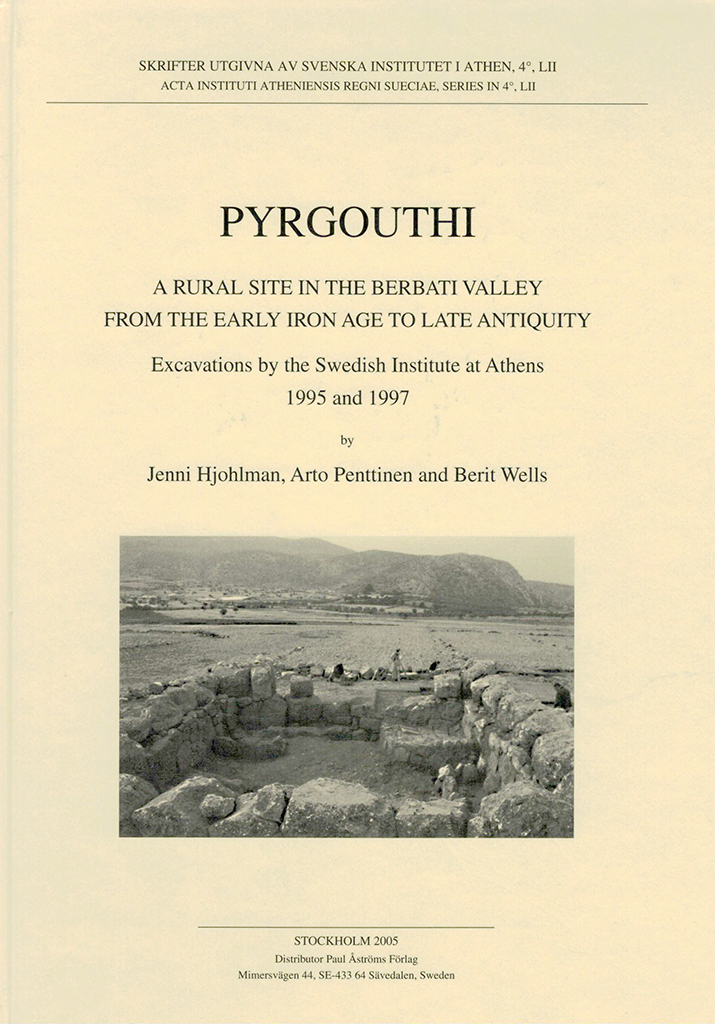All content of Opuscula 12 (2019) is available with open access. Printed edition distributed by Eddy.se AB. Also available at Amazon.com, Adlibris, and Bokus. View volume at ERIH PLUS. Trees and shrubs in the sanctuary. Wood charcoal analysis at the Sanctuary of Poseidon at Kalaureia, Poros By Maria Ntinou (Aristotle University of Thessaloniki, Greece) Abstract Wood charcoal analysis at the Sanctuary of Poseidon at Kalaureia, Poros aims to provide information on the vegetation of the area and its management and on the range of plants used in the activities taking place at the sanctuary. During the excavations of 2003–2005 in Areas D and C, systematic samples from fills and features from all the excavated strata were recovered and water flotation was used for the separation of wood charcoal from the sediment. Wood charcoal was found in two pits dated to the Early Iron Age, near the supposed altar of the Archaic period (Feature 05), in a deposit of the Hellenistic period (the “dining deposit”), in floor deposits (Early Iron Age and Late Classical/Early Hellenistic periods), and fills of different chrono-cultural periods (Archaic–Early Roman). All the taxa identified in the wood charcoal assemblages are thermophilous Mediterranean elements, most of them evergreen…
Opuscula 9 (2016) is now available for purchase and free download at bokorder.se. Also available at Amazon.com, Amazon.de, Bokus.com and Adlibris.com. People and plants. Piecing together archaeological and archaeobotanical data to reconstruct plant use and craft activities in Mycenaean Tiryns By Melissa Vetters, Ann Brysbaert, Maria Ntinou, Georgia Tsartsidou & Evi Margaritis Abstract Archaeobotanical data are often employed to reconstruct a site’s or a region’s palaeoecology, human use of plants such as agricultural regimes, and the interplay between vegetation and anthropogenic factors in the palaeoenvironment. This paper aims to show that a context-specific integration of such data helps to guide the focus beyond the macroscale and may thus add significantly to the reconstruction of microscale activity areas. New archaeobotanical data from four different find spots in the Lower Citadel of Tiryns, Greece, dating to the Mycenaean Palatial and Post-Palatial periods highlight the importance of combining the analysis of the fruit/seed macroremains with anthracological and phytolith studies and integrating these results in their archaeological contextual study. Based on the data from botanical non-wood macroremains, wood charcoal, and phytoliths, the paper discusses methodological issues such as differential preservation of archaeobotanical remains that only becomes evident if more than one analytical method is…
Distributed by Astrom Editions. View record at WorldCat. Pyrgouthi. A rural site in the Berbati Valley from the Early Iron Age to Late Antiquity. Excavations by the Swedish Institute at Athens 1995 and 1997 By Jenni Hjohlman, Arto Penttinen & Berit Wells, with contributions by Yannis Bassiakos, Katie Theodorakopoulou, Hero Granger-Taylor, Sven Isaksson, Petros Lymberakis, Dimitra Mylona, Maria Ntinou, Anaya Sarpaki & George Syrides This volume presents the results of the excavations in 1995 and 1997 at Pyrgouthi in the Berbati Valley, Argolis, Greece. The toponym is the local denomination for a Hellenistic tower, which has always been a prominent in the landscape. In the surface survey of the valley in 1988–1990 the tower was perceived as part of a Classical farmstead and in the ensuing excavation project it was targeted as such. However, the excavations revealed that this interpretation corresponded to but a fraction of the truth. The tower had been built on a knoll in the center of the valley but the earliest human activities at the site can be dated to the end of the Early Iron Age or the eight century BC. At this point in time, Arto Penttinen argues, the archaeological record can be reconciled…



